The question has been answered here: Oracle: I need a "partial" outer join. Look at the image
Look at the table. I've done a join the column CodA is from table A, the CodB is from table B. If I have the following situation my comparison goes wrong.
I would like to see a result like in the 3rd image. Should I do it using a Full outer JOIN?
SELECT master, detail, codA, codB, DECODE(A, B, 'Equal', 'Not equal')
FROM A, B
WHERE a.master = b.master
AND a.detail = b.detail
I also need to make a full outer Join JUST for the a.CodA = b.CodB statement, but not for the a.master = b.master statement. It must use normal JOIN there.


